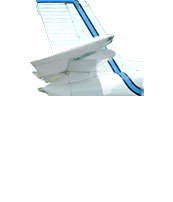Aircraft Air Supply Contamination Concerns......................... pages: 1 | 2 | 3
The National Research Council report The Airliner Cabin Environment and the Health of Passengers and Crew1 assessed existing data on a wide range of chemical and biological contaminants that may be present in airliner cabin air. The report’s recommendations for further research were incorporated in Congressional legislation mandating research into five areas of cabin air quality. These are:
2. Pesticide exposure data;
3. Sampling duct and filters residues after air quality incidents to identify the
3. contaminants to which passengers and crew were exposed;
4. Cabin air pressure and altitude; and
5. Health surveillance for cabin air quality incidents.
One suspected source of the air quality incidents referred to are heated engine oils and hydraulic fluids and their products that can enter the air supply (environmental control) systems during various phases of flight. The NRC report posed many questions that need to be answered about these incidents including their overall frequency, how the frequency varies among aircraft types, what is the toxicity of these contaminants, and what are potential health effects. The rate of occurrence of such incidents is known to be low, but with 29,000 flight segments originating daily in the U.S. alone, they are still of concern.
What follows is a discussion of some of the contaminants that enter the supply air and the means by which they can do so during the various phases of flight.
